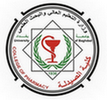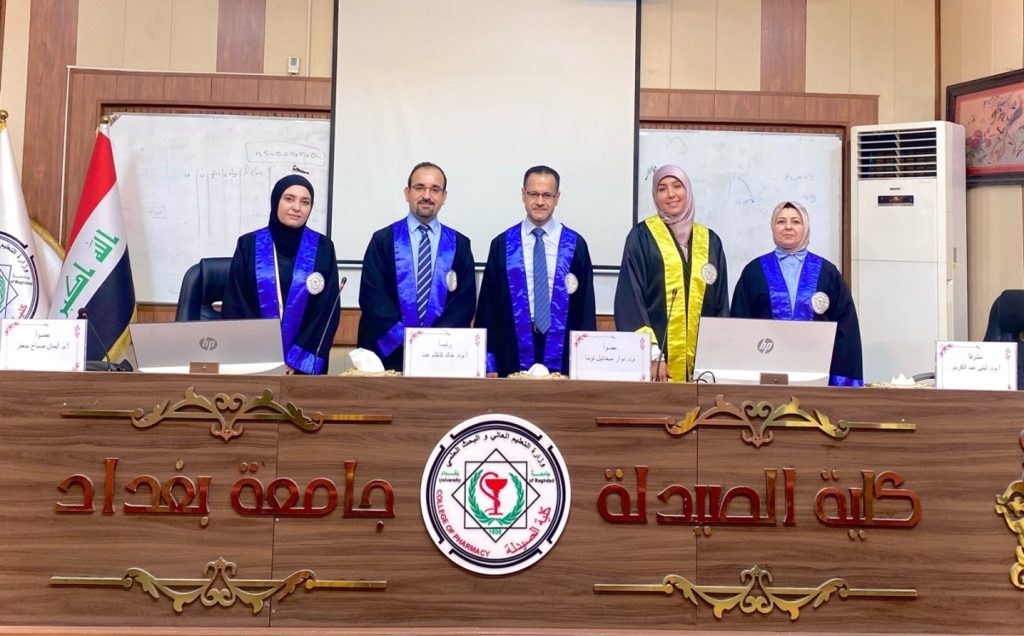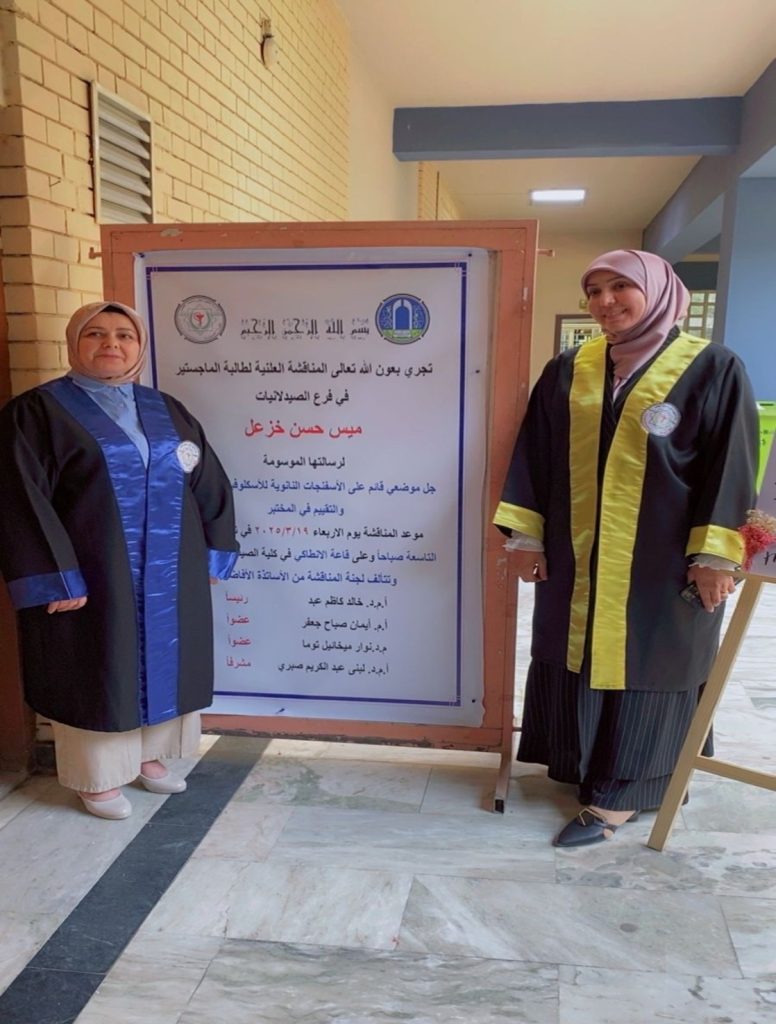The College of Pharmacy discussed the MSc thesis entitled “Aceclofenac Nanosponge-based Topical Gel: Preparation and In-vitro Characterization” by the student Mays Hassan Khazal and the supervisor, Assistant Professor Dr. Lubna Abdalkarim Sabri, at the PharmaceuticsDepartment . The study aimed to formulate and characterize aceclofenacnanosponges incorporated into a hydrogel matrix to improve drug efficacy, enhance safety, and promote patient compliance through sustained drug release. The study included aceclofenac nanosponges prepared using the emulsion solvent diffusion method, employing ethylcellulose and Eudragit L100. The impact of formulation variables on the physicochemical properties of the nanosponges was systematically investigated. Key characterization parameters included particle size, product yield, entrapment efficiency (%), and drug release profile. The optimized nanosponge formulation was subsequently incorporated into seven hydrogel formulations containing hydroxypropyl methyl cellulose at varying concentrations to develop drug-loaded nanosponge hydrogels. These hydrogels were evaluated based on their physical appearance, pH, viscosity, spreadability, in vitro drug permeation, and drug content. The results showed that an increase in polymer concentration led to a significant reduction in product yield and drug entrapment efficiency, while concurrently causing a notable increase in particle size. Additionally, a significant variation in product yield and entrapment efficiency was observed with increasing polyvinyl alcohol content. The selected hydrogel formulation (G1) exhibited the following results: pH (6.2±0.15), drug content (95.19±0.23%), spreadability (9.5±0.2 cm), and 55.94±1.4% permeation over 8 hours. Furthermore, in vivo anti-inflammatory evaluation of formulation G1 indicated a 65.38±1.1% reduction in inflammation over 24 hours. Stability studies confirmed the formulation’s stability over a three-month storage period. The study recommended that aceclofenac-loaded nanosponges hold promise for therapy by offering extended drug release and excellent stability.





